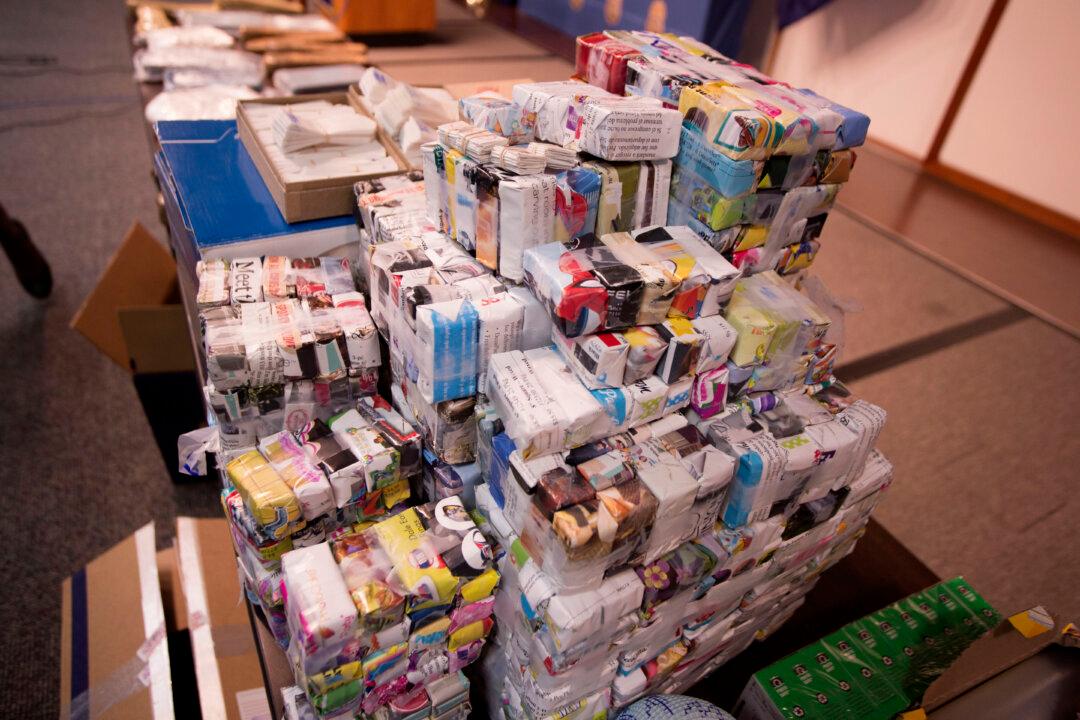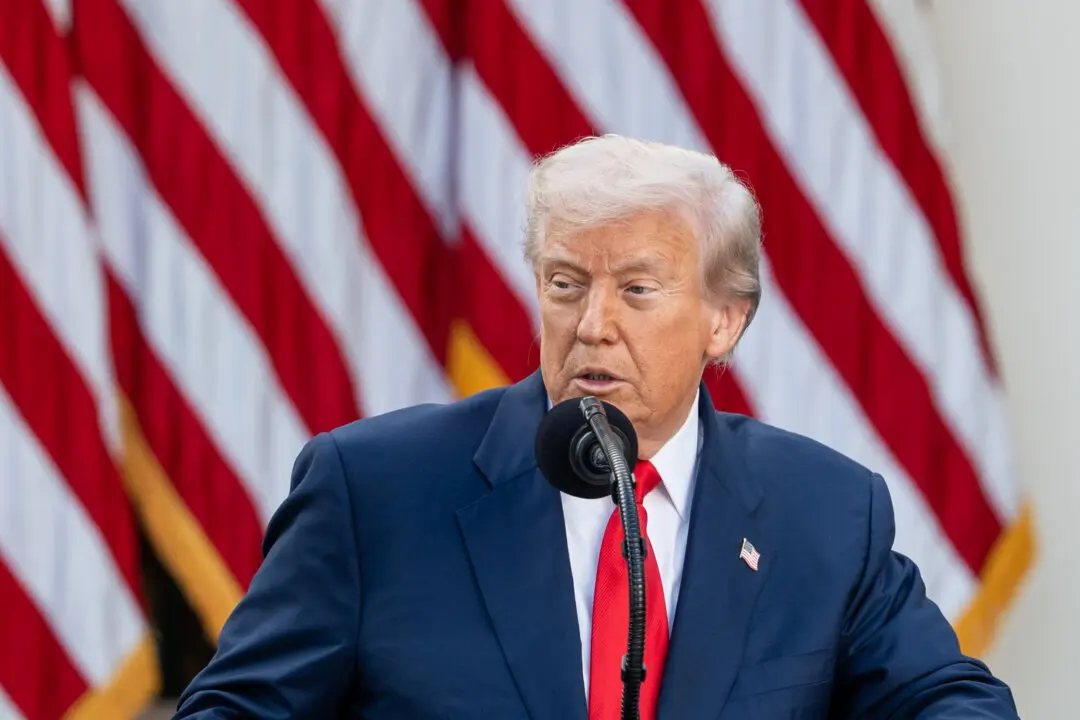NEW YORK—In late August, truck driver Jeen Blake loaded up his tractor-trailer in Riverside, Calif., for his trip to New York. Days later, he drove through Staten Island into the city, and pulled into a desolate parking lot on Long Island, where his employer Dorian Cabrera met him, carrying a duffle bag.
There were 33 pounds of heroin, packed into blocks—some in the shape of shoe soles—hidden away in a compartment in the cab of the truck. Blake fumbled with a device, and had to use tools to open up the hidden compartment.
Upon leaving the cab, the two were arrested and Cabrera was found to have $190,000 in cash on him, officials said Wednesday. Cabrera and Blake were scheduled to be arraigned on the indictment Wednesday.
In an unrelated case, officials announced on the same day, seven people were arraigned Friday for running a heroin mill in the Bronx, where 22 pounds of heroin were seized.
The two busts represent two different points on the supply chain, said Special Narcotics Prosecutor Bridget Brennan, and the heroin seized has a combined value of about $12 million. In the Bronx mill alone, police found enough heroin packets for street distribution—glassines—to give to every man, woman, and child in New York City.
“These cases demonstrate how drug traffickers are flooding the New York Metropolitan area with heroin that originates from Mexico,” Brennan said.
Twenty Five-Year High
Police across the metropolitan area have seen a rise in use, trafficking, sales, and overdoses from heroin across the board.
“It’s abundant, it’s cheap, it’s purer than we’ve ever seen it before. It’s not the stuff from 35 or 40 years ago,” said New York State Police Superintendent Joseph D'Amico.
Heroin used to be seen as an urban problem, concentrated in parts of the Bronx and Brooklyn. Now it’s in the suburbs, Upstate, New England, and even the rural areas of the region.
It’s a national trend. Seizures at the U.S.-Mexico border have quadrupled in the last five years, officials said, and New York is the biggest market.
According to the Drug Enforcement Administration, 20 percent of all heroin seized is in the New York metropolitan area.
There has been 500 pounds of heroin seized already this year, the highest amount in 25 years.
Epidemic
In the areas that have always had problems with heroin—typically in lower income neighborhoods among the 35–54 age group—the usage and overdoses have spiked, Brennan said.
But now it has also spread to all socioeconomic backgrounds across different age groups.
Part of what has contributed to the rise of younger users is the easy access. The heroin glassines sell for about $5–$10 in New York City, and has become a natural next step for kids using opioids in the form of prescription pills, Brennan explained.
Once they run out of pills of OxyContin or Percocet, they look for heroin, which packs a bigger punch and is far more addictive.
“The scourge of heroin coming into the city is at a purity point we have never seen before in this country,” said Thomas Purtell, New York City Chief of Organized Crime Control.
In 1984, the amount of pure heroin in a glassine was about 5–10 percent. Now it’s 38–40 percent, according to a DEA test of the five boroughs last year.
The amount of product and unprecedented purity is leading to a oncoming health crisis, Purtell said.
“There is no safe way to use heroin,” Brennan explained. People think they can use it once at a party and be fine, but a person is just as likely to die using heroin once, Brennan said.
“Those messages are stark and in today’s world I don’t know if there’s a receptive audience for those messages,” Brennan said. “But it’s the truth.”
Naloxone, a prescription drug that reverses the effects of certain opioids, has been touted as a miracle recovery drug for overdoses. But it’s not a cure, officials stressed.
In May, New York City became the first big city to equip first responders with naloxone.
Hundreds of officers have been trained, D'Amico said, and in the last month they’ve administered naloxone about 20 times, saving about 15 lives. But a near-death experience does not deter an addict from seeking out more heroin.
“Recently we just saved a male for the second time. Someday we may not be there and he may end up overdosing,” D'Amico said. “We’ve got to fight this stuff before it gets out on the streets and before it gets to the users.”
Heroin trafficking doesn’t have the sort of gang violence attached to it as cocaine does, officials said.
They’re businessmen out to make money who will use “any measure imaginable,” Purtell said. “Their goal is to create more heroin addicts.”





